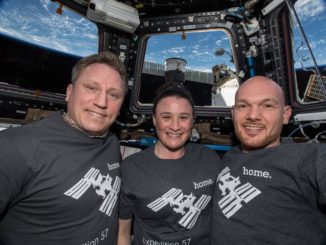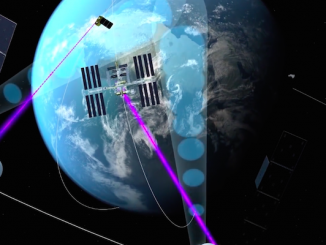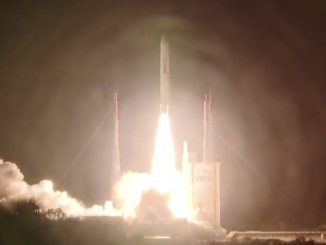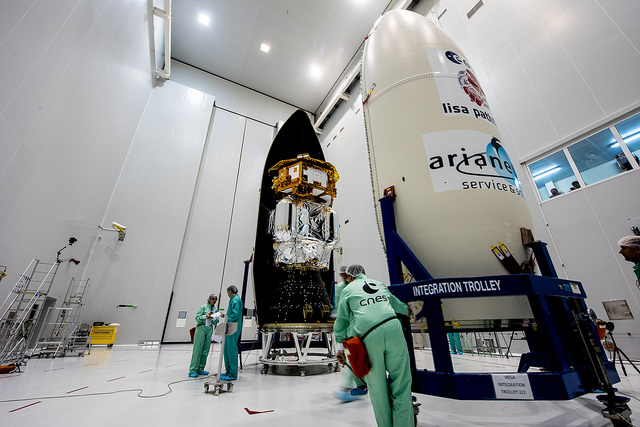
After criss-crossing Europe for a decade, the LISA Pathfinder satellite testbed has reached its last stop before launch in early December on a mission to demonstrate the delicate technologies required to detect elusive low-frequency gravitational waves rippling through the cosmos.
Ground crews transferred the spacecraft — already enclosed inside the Vega rocket’s nose cone — from a preparation facility at Europe’s spaceport in French Guiana to the Vega’s launch pad Wednesday. A crane lifted the package on top of the four-stage rocket Thursday, topping off the 98-foot-tall (30-meter) booster.
The European Space Agency mission is set for launch Dec. 2 at 0415 GMT (11:15 p.m. EST on Dec. 1) on the sixth flight of the Italian-led Vega rocket. The mission has a one-second launch window, or else wait until another day.
Made by a contractor team led by Airbus Defense and Space’s UK division, the hexagonal space probe is heading for a looping halo-like orbit around the L1 Lagrange point nearly a million miles, or 1.5 million kilometers, from Earth toward the sun. The tug of gravity from Earth and the sun roughly balance at the L1 point, making it a popular home for solar research missions.
But LISA Pathfinder will not look at the sun.
Mission planners chose L1 for LISA Pathfinder’s operating post because it offers a gravity-neutral location to avoid spoiling the probe’s finely-tuned internal sensors, which must maintain extremely precise movements to cancel out any extraneous gravitational field.
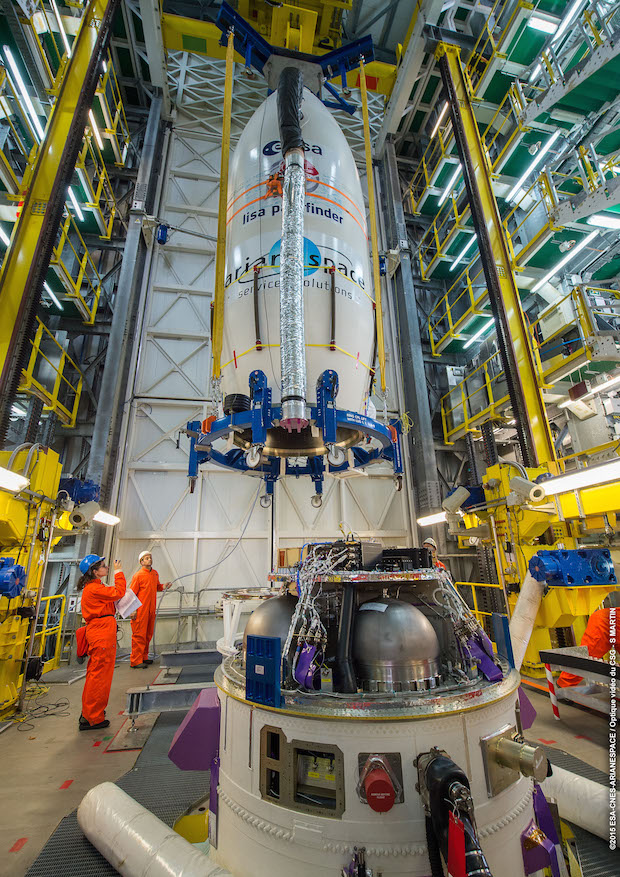
The spacecraft will release two gold-platinum alloy cubes — each 1.8 inches (46 millimeters) on a side — from launch locks inside internal chambers once it is on track for the L1 Lagrange point. Free-floating 15 inches (38 centimeters) apart inside separate vacuum enclosures, the motion of the test cubes will be tracked to one thousandth of one millionth of a millimeter using a laser ranging system measuring the distance between them.
Cold gas micro-thrusters mounted outside the probe, coupled with specialized control software, will carefully regulate the movement of the spacecraft to keep the gold-platinum test masses floating inside their housings. The goal of the spacecraft is to keep the test cubes floating in an electrostatic field free from outside influence, demonstrating the masses can remain in near-perfect free-fall.
NASA supplied a separate set of colloidal thrusters, which generate thrust by accelerating liquid fuel through an electric field, to take over control of LISA Pathfinder for part of its 180-day prime science mission. The U.S. space agency also developed separate software algorithms to be tested on the mission independently of the European control systems.
The crux of LISA Pathfinder’s mission is testing out the thrusters, software, lasers and electronics required to fly a such a spacecraft perfectly undisturbed.
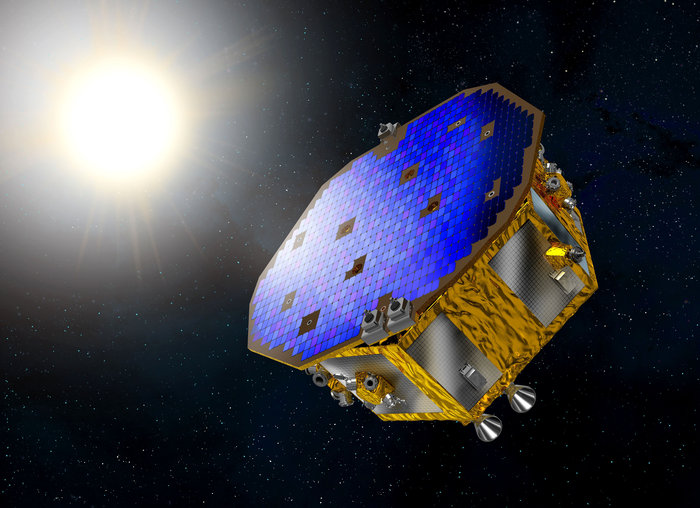
LISA Pathfinder is designed to essentially fly itself around the free-floating test masses embedded inside it, according to Cesar Garcia Marirrodriga, ESA’s project manager for the mission.
Such technologies are vital to a future satellite project to deploy a fully-fledged gravitational wave observatory. With up to three spacecraft stationed up to millions of miles apart, the multi-spacecraft observatory set for launch in the 2030s will be capable of picking up signals of gravitational waves by monitoring slight, but measurable, changes in the distances between the test masses inside the three spacecraft.
Astronomers say gravitational waves coming from immense objects in the distant universe, such as merging black holes and galactic nuclei, can yield new insights into the fundamental physics of the universe in ways impossible to study with traditional observations of light waves.
LISA Pathfinder is purely experimental. Its modest size — about 6.9 feet (2.1 meters) in diameter — is too small to detect the low-frequency gravitational waves themselves.
ESA authorized full development of LISA Pathfinder in 2004, with a launch then expected in 2008.
But hurdles stood in the way, forcing European designers to switch from a futuristic design of electric micro-thrusters to stabilize the spacecraft in orbit to less precise nitrogen cold gas thrusters. Engineers also struggled with the mechanism that will shield LISA Pathfinder’s test masses from the vibrations of launch.
“It’s been a long mission — longer than anticipated — and the reason is we are a technology mission,” Marirrodriga said in an interview with Spaceflight Now. “In some cases, we thought we had technical solutions and we had to change. We had to change because that technical solution was not working, and when you change something in the middle of a space mission, then that affects everything the rest of the way.”
Speaking Friday in an phone interview from the Vega launch base in French Guiana, Marirrodriga the launch campaign for LISA Pathfinder has had no such glitches.
Technicians from Arianespace and ELV, the Vega’s commercial operator and Italian prime contractor, began stacking the rocket on its launch pad in late September.
First erected was the P80 first stage solid rocket motor, which generates more than 650,000 pounds of thrust. Crews added the Vega’s Zefiro 23 and Zefiro 9 second and third stage motors, then hoisted a liquid-fueled fourth stage atop the rocket.
The addition of LISA Pathfinder inside its payload fairing Thursday completed assembly of the rocket.
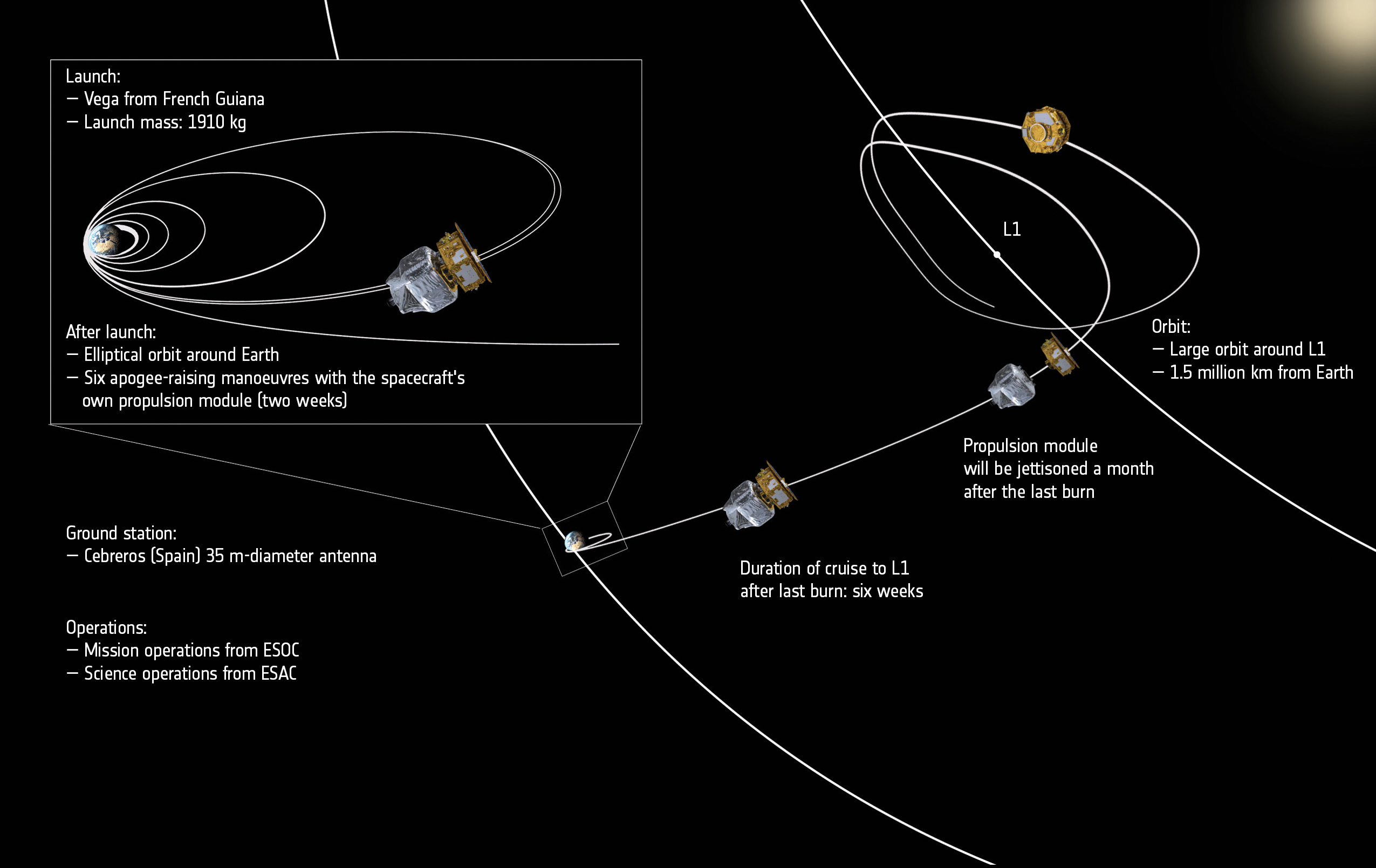
LISA Pathfinder’s cruise to the L1 Lagrange point will take about 50 days.
The Vega booster will first loft the 4,210-pound (1,910-kilogram) spacecraft into an elliptical parking orbit after its Dec. 2 launch. Marirrodriga told Spaceflight Now the launch will deposit LISA Pathfinder in an initial orbit with high point of about 954 miles (1,536 kilometers) and a low point of 124 miles (200 kilometers).
LISA Pathfinder carries with it a liquid propulsion module based on Airbus’ telecommunications satellite bus, and six engine firings will propel the probe out of its low-altitude orbit toward L1.
Assuming an on-time launch Dec. 2, a test burn of the engine is scheduled for Dec. 5, followed by the six orbit-raising maneuvers Dec. 6, Dec. 7, Dec. 8 and Dec. 11, Marirrodriga said.
“We can say then we’re going to L1,” Marirrodriga said.
The mission may require course-correction burns on the journey to L1 in December and January, then LISA Pathfinder will be captured into an expansive, arcing pathway around the libration point.
The mission’s science module will jettison the expendable propulsion package Jan. 22, assuming a launch in early December.
“You can argue then that we are already on a trajectory around L1 because from that moment on, the only thrusters that (LISA) Pathfinder will have are the micro-newton thrusters — the cold gas thrusters — so you already have to be injected into an orbit around L1,” Marirrodriga said.
The complex procedure to release LISA Pathfinder’s gold-platinum test cubes is set for early February, with its six-month baseline mission beginning soon after.
Email the author.
Follow Stephen Clark on Twitter: @StephenClark1.

